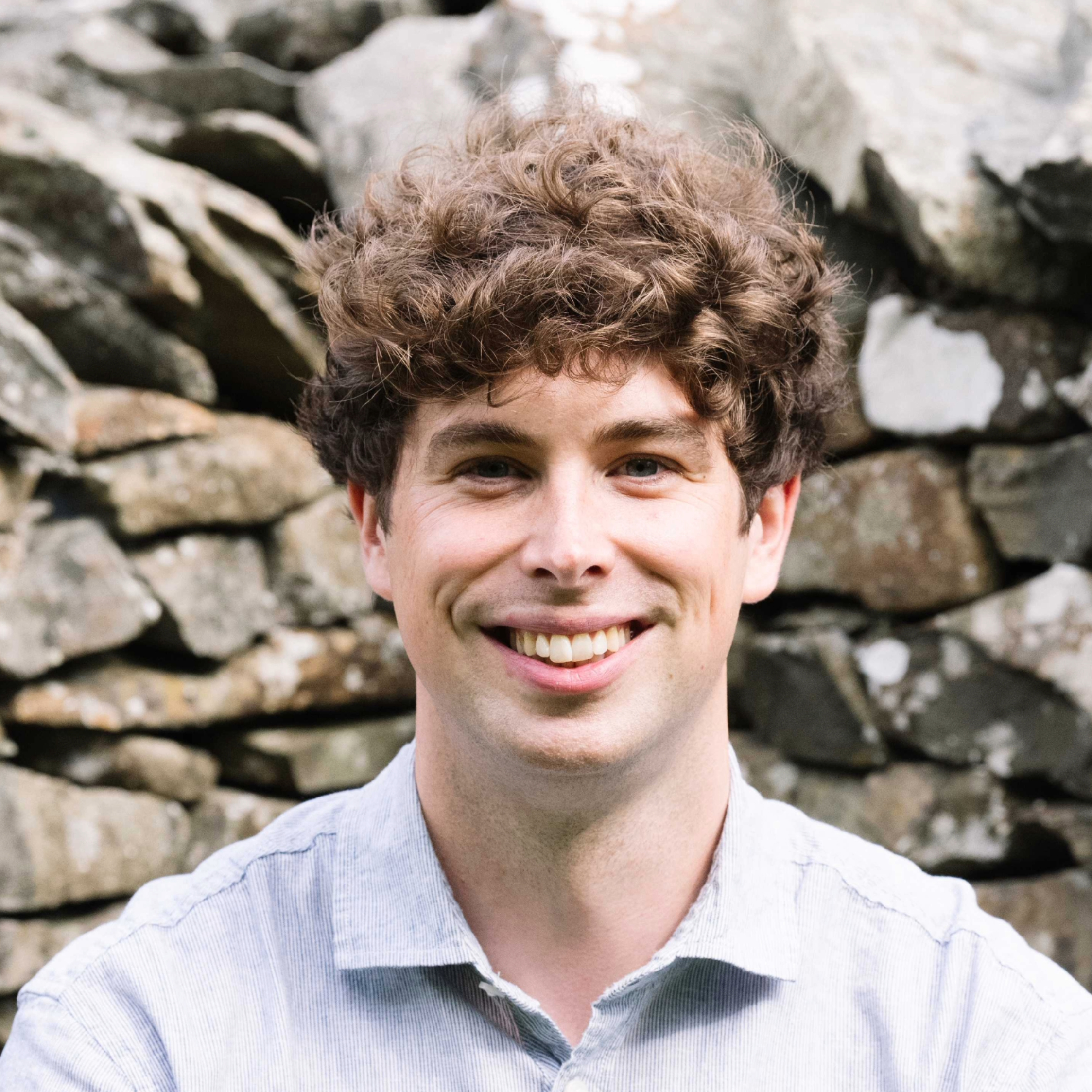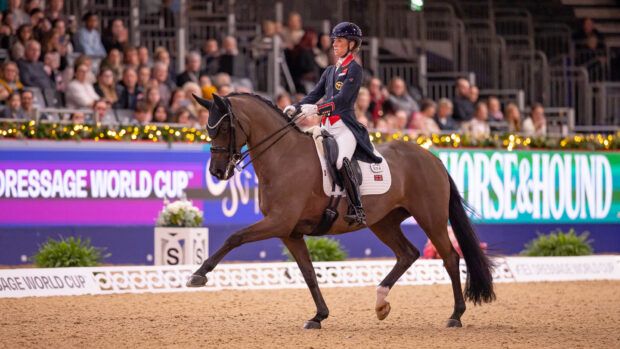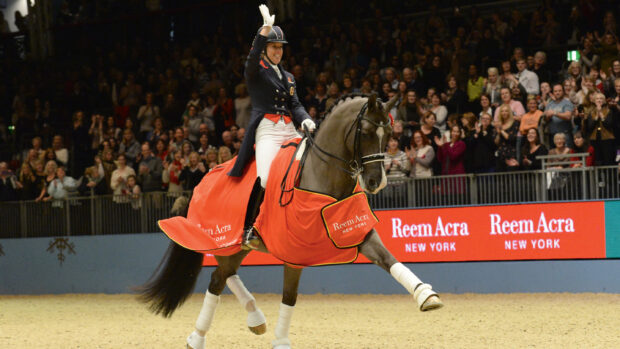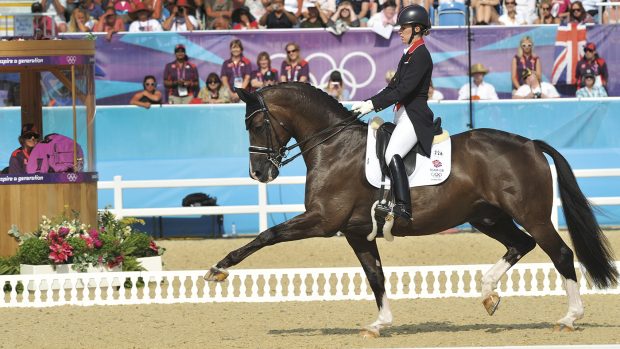Very few riders have brought as many young horses through the levels to grand prix as Charlotte Dujardin. While at the recent British Dressage National Convention (25 November) she shared her top tips on what to look for in a young horse and how to start their education sympathetically. So if you want to start your young horse off in the best possible way, check out these top five young horse training tips.
1. Transitions, transitions, transitions
“With a young horse, you have to ride hundreds of transitions, not just one or two,” says Charlotte, while aboard the striking four-year-old Secret Agent. “Although we all want to do the tricks, let me tell you the tricks are the easy part, this is the hard part. If you get this wrong it follows you all the way up.
Allowing the horse to go forward into downwards transitions enables the hind leg to step underneath them without the rider having to alter their frame, Charlotte explains: “On downward transitions, I still have to think forwards. I’m not thinking with my reins, pulling him into walk because that’s a backward transition.
“On upward transitions, I think it’s very important, especially at this age, not to override them with your legs. Because if you start to override you suffocate the horse and it starts to rely on the leg. If you have a horse that’s naturally lazy you have to teach him to go off your legs, and if you have a horse that’s quite hot you have to teach him to accept your leg.
“They don’t have to be perfect transitions, or perfectly balanced – it takes time, dressage is all about time and repetition.”
2. Vary their routine
“Having a different routine, not just going in the school, but hacking them out, using hills, helps to develop the walk and get the length of stride,” says Charlotte. “Mentally, it’s great that he goes out and sees other things, not just the arena.”
When she is schooling the young horses she does so for no longer than 20 minutes, three or four times a week. She also adds in stretching work before each session. When stretching young horses she looks for the horses to drop their heads without curling over.
“I have a longer rein, a wider hand, and with my feeling in the rein it’s like I’m holding his hand. I’ve got to keep a still hand that encourages him to take it forward. That teaches him to carry himself and find his own balance, I can’t do anything for him.”
But she stresses it’s important not to put too much pressure on a young horse, and that the balance might come and go.
“I’m just letting him be a four-year-old, not trying to expect too much from him and not stopping him from making mistakes.”
Charlotte also recommends hiring out venues to give younger horses that all-important exposure, without the rider having to deal with the pressure of riding a test.
“When I do take them out to young horse classes, it’s just for education, I don’t want to over campaign them.”
3. It’s not all about a flashy trot
When you’re looking for a young horse, it can be quite easy to be drawn to the videos of flashy, extravagant movers.
But, as Charlotte emphasises: “Character is one of the most important parts of a horse, it doesn’t matter if it moves incredibly and has three massive paces, if it doesn’t have a good temperament, then it’s very hard to do the job you want to do.”
If you’re looking to buy a young horse, when it comes to paces Charlotte prioritises a good walk and canter.
“The trot is the pace we can change the most and develop,” she says. “You’re looking for a horse with a good rhythm and a canter that’s quite natural because a lot of the grand prix work is canter.”
Charlotte also believes the walk is an often neglected pace when it comes to ridden work.
“The walk has the coefficient all the way from novice to grand prix. So it is a very, very important pace. As riders, we get to walk and we think it’s time for a break, so we have a chat with a friend and we’re not actually developing the walk.
“What I’m trying to do is teach them to take my hand down and forward and march out. I’m looking for that overtrack, how much I can get his hind leg to step in front of the print of the front leg.
“Every day I’m trying to work on my walk, trying to get that relaxation, trying to get the horse to drop its head and neck, to stay in front of the vertical and take my hand forward.”
4. Build a relationship with them
“When you ride horses at this age, the most rewarding part for me is that you build a relationship with your horse like no other,” Charlotte says. “I don’t want to force him into anything, if he doesn’t want to do it, then he doesn’t want to do it. He’s got to want to do it with me and I’ve got to be his friend, he’s got to trust me.
“My job as a rider is to reassure him, hold his hand, what I don’t want to do is grab the reins or get off and lunge him. They’re not being spooky because they’re naughty, it’s because they haven’t seen these things before. He’s allowed to have a look, I don’t want to not let him see what he’s afraid of. I’m not going to pin his head down and kick him forward.
“I use my voice a lot – it’s nice to tell them when they’re good and it’s so important to keep giving these horses confidence.
“I can never forget at London 2012 with Valegro, I went into the arena and they all clapped, and a lot of the riders were really nervous about the crowd clapping. But I didn’t want to tell the crowd not to clap, I trusted my horse enough to know that he’ll cope with that.
“He went in, they clapped, and he tensed up, but I gave him a pat and I could literally feel him breathe, relax, and it was all okay again.”
5. Don’t sweat the small stuff
Throughout her masterclass, Charlotte repeated how important it is to understand that with young horses there will always be sessions that are worse than others.
“We all have those days,” says Charlotte. “I’m very lucky that I get to ride nine or 10 horses a day, so if I have a crazy young horse that I have a bad day on, I can get on another horse and it can cheer me up.
“If you only have one horse, it’s quite hard because you could just keep going, going, and going. But you have to remember, physically, they’re going to keep growing and changing until they’re at least seven, so try not to overwork them. You’ve got to keep it fun and easy and nice. I don’t look for perfection, all I’m looking for is improvement.
“It doesn’t matter if there’s a horse of the same age who’s a bit more developed, believe in yourself and what you feel is right for your horse.”
You may also be interested in…
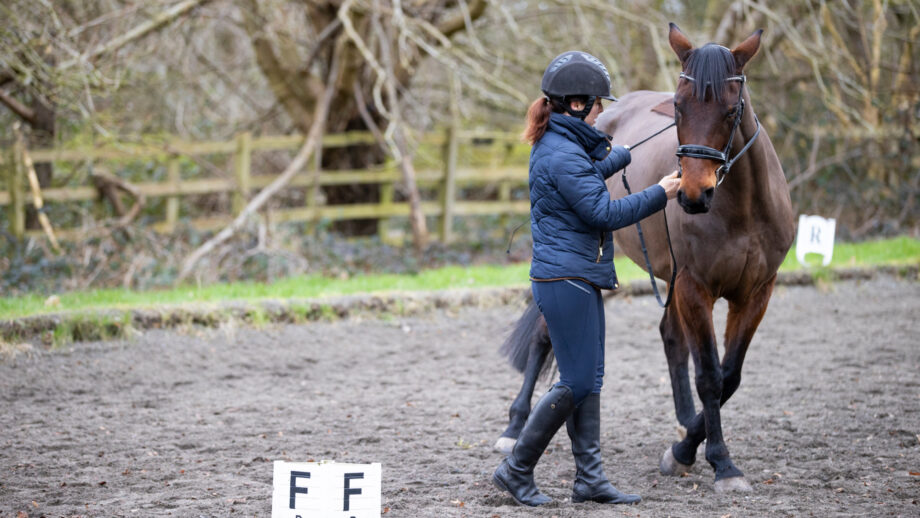
Why in-hand work could be the missing piece in your dressage training: four simple exercises to build your horse’s strength, suppleness and focus

8 training gems from Carl Hester that could transform your dressage scores

Charlotte Dujardin and Lottie Fry set to delight dressage fans in London

Subscribe to Horse & Hound magazine today – and enjoy unlimited website access all year round
Horse & Hound magazine, out every Thursday, is packed with all the latest news and reports, as well as interviews, specials, nostalgia, vet and training advice. Find how you can enjoy the magazine delivered to your door every week, plus options to upgrade your subscription to access our online service that brings you breaking news and reports as well as other benefits.


